
During the 18th century, there were a few visual artists who produced some of the most important art of the period. Artistic pursuits were not a common pastime. Most people traditionally associated art with wealth and aristocracy. Also, art supplies such as paint, brushes, and canvases were hard to come by. Most people with the skill to paint did so by painting houses or furniture.
Read below about some of the famous portrait painters of the time and their work.
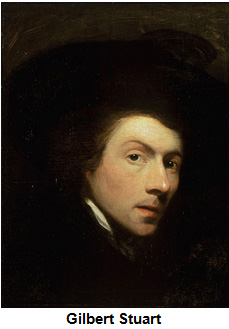
Source: Gilbert Stuart Self portrait, Scewing, Wikipedia.
Gilbert Stuart was one of the most famous American portraitists. His most famous work is the unfinished portrait of . He painted more than 1000 portraits including those of the first six presidents. His work continues to be celebrated and can be seen in some of the most famous museums in the country.
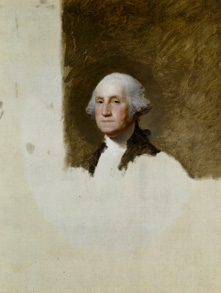
Source: Gilbert Stuart 003, Scewing, Wikimedia.
Stuart and other painters, such as John Singleton Copley and Charles Willson Peale, contributed to the American artistic movement through their visual art during the 18th century. During the 19th century, however, there was a shift in the general attitude toward visual art. Historical paintings and other visual representations became an important way to honor the important events such as the American Revolution. One such painting is John Trumbull’s Declaration of Independence (pictured below) which depicts the draft of the Declaration of Independence as it is presented to Congress.
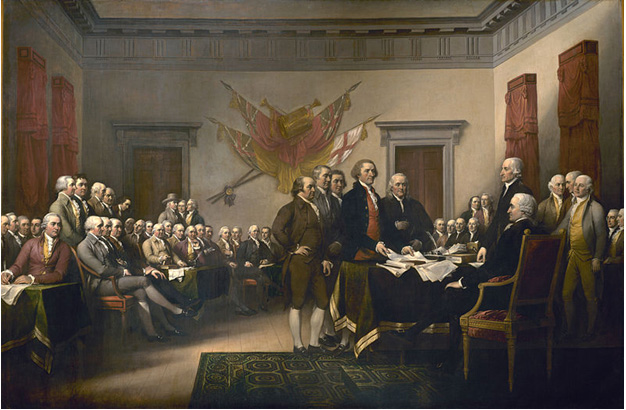
Source: Declaration of Independence, Amandajm, Wikipedia
John Trumbull’s painting is also featured on the back of the two-dollar bill.
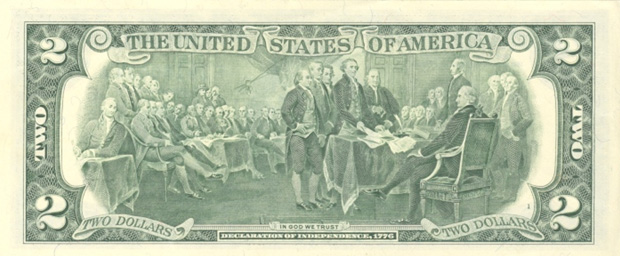
Source: US $2 Reverse, Conscious, Wikipedia.
After analyzing the painting, why do you think this painting caused the American public to appreciate art of this type? Who are the subjects of this painting (the people in it)? Why do you think it was chosen as the back of the two-dollar bill? (hint: Thomas Jefferson is on the opposite side of the bill.)
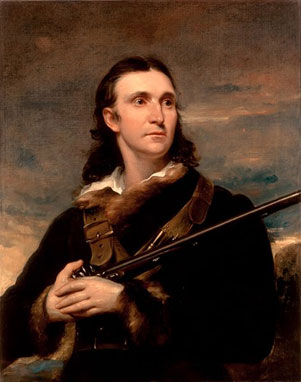
Source: John James Audubon 1826, Scewing
Interactive popup. Assistance may be required. was an artist who used his science background to create an artistic record of his research of the birds of America. Audubon was a French American who was considered a naturalist. He was also an ornithologist, one who studies birds. He was fascinated with nature – especially the beauty of birds that he began to document. From 1827 to 1839, Audubon documented his research with illustrations of birds in their natural habitats. His major work was a book entitled Birds of America, in which Audubon identified 25 new species and twelve new sub-species. This book represented all that Americans knew about birds at that time. Examples of his work are below.
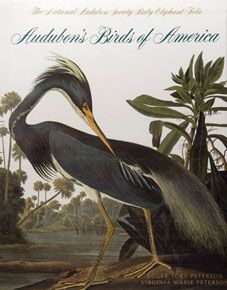 Source: Birds of America, Gobonobo, Wikipedia |
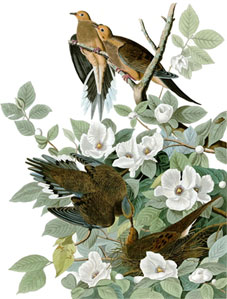 Source: Zenaida Macoura, Cotinis, Wikimedia |
The American public began to demand more visual artistic representation of the American culture. Soon new paintings portrayed the beauty of America through paintings of landscapes. From 1820 to 1880, a group of landscape painters called the Hudson River School artists focused their paintings on the wilderness of the Hudson valley, coastal areas of New England, and various mountain ranges and other landscapes of New England, as well as a few landscapes of America’s new West.
The artists who belonged to Interactive popup. Assistance may be required. of artistic thought believed that illustrating the geography of America would reflect the national pride that was growing.
Some of the artists of the Hudson River School and their work are below.
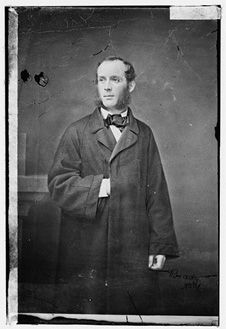
Source: Frederick E. Church, Library of Congress.
Frederick Church was an American landscape painter from Hartford, Connecticut. He was a key artist in the Hudson River School of American landscape painters. He studied art with Thomas Cole and later lived in Ecuador.
His artwork focused on natural wonders such as Niagara Falls (pictured below) and the Andes Mountains. To illustrate his love for both nature and science, he used rainbows and sunsets to create emotional paintings.
Niagara Falls
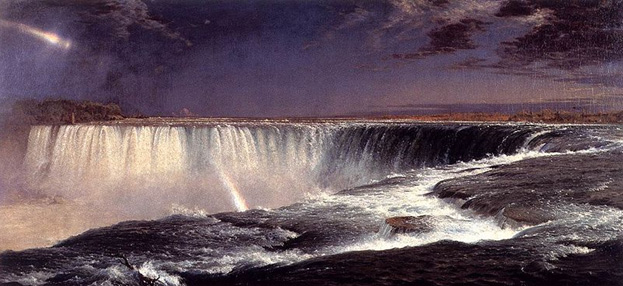
Source: Frederic Edwin Church-Niagara Falls, Wikimedia.
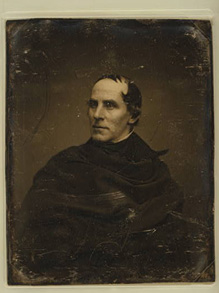
Source: Thomas Cole, head-and-shoulders portrait,
facing slightly left, Mathew Brady, Library of Congress.
Thomas Cole is sometimes referred to as the founder of the Hudson River School. His artwork was famous for its detailed portrayal of the American landscape. The themes of his work were mainly romanticism and naturalism. One of his most famous paintings, The Oxbow, is pictured below.
The Oxbow
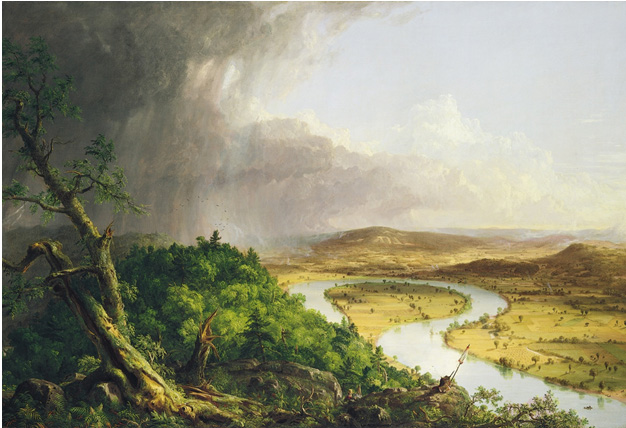
Source: Thomas Cole's The Ox Bow, Wikimedia
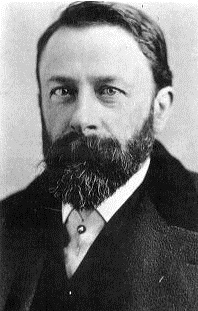
Source: Bierstadt, Bubamara, Wikipedia.
Albert Bierstadt was a German-American painter best known for his colorful landscapes of the American West. Bierstadt participated in several journeys during the westward expansion in order to get a true feeling for the beauty of the American West.
The Hudson River School artists created the visual representation of the ideas of the transcendentalists. The artists created work that combined the beauty of nature while appealing to the emotions and senses of those who viewed it.
Yosemite Valley, Yosemite Park
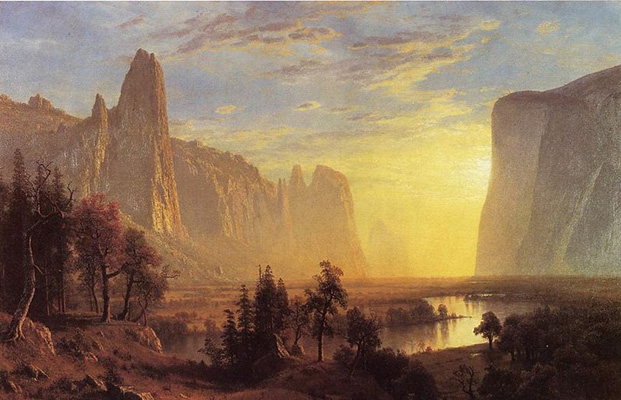
Source: Bierstadt Albert Yosemite Valley Yellowstone ParkStaszek99, Wikipedia.
Click the link below to watch a video about Yosemite National Park and answer the questions that follow in your notes.
In summary, the artistic movement of the 19th century resulted in visual and literary masterpieces that still influence the American culture today. American culture is constantly changing in response to the thoughts and ideas of the people of the time.